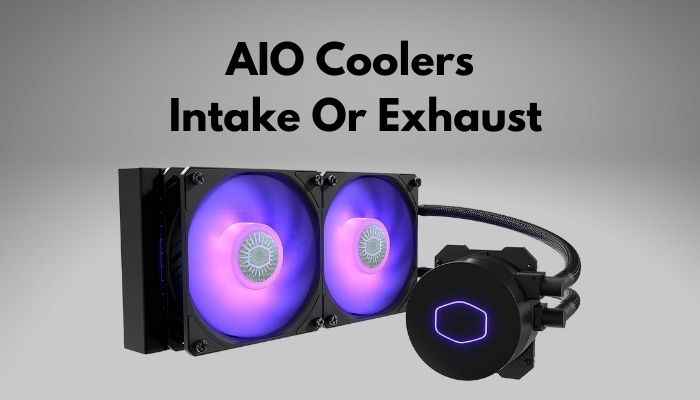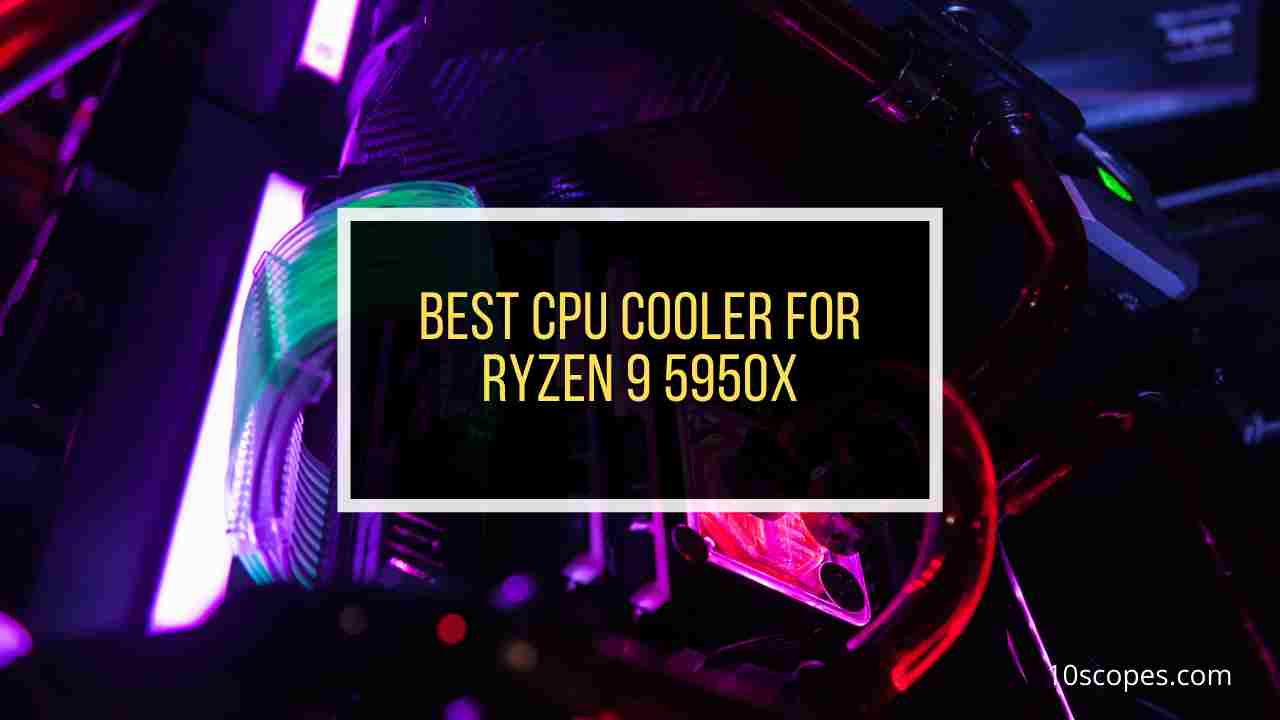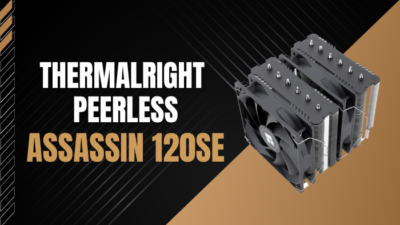Your old CPU cooler wasn’t doing a good job at keeping your PC cool so you purchased an AIO cooler that just arrived and you want to make sure that you get the best performance possible with this.
Now, you are just wondering:

Are AIO coolers best as intake or exhaust?
You are not the only person with that question. I wondered the same thing myself when I was starting as a computer technician, but I’m an expert now, and I have a lot to tell you about this topic.
So, make sure to be wide awake and active by getting a coffee while reading every part of this article because I have included only the necessary information.
Are CPU Fans Intakes Or Exhausts?
You will find that the majority of CPU fans are specifically designed for exhaust, unlike the AIO coolers, as they are used to blow the hot air away from the PC. However, there are some CPU fans available that have a dual fan setup, one as intake and one as exhaust.
A point you need to keep in mind is the fact that you have total freedom about which way you want to position the fans. You can position the fans and make the CPU fans work as intakes or exhausts, whichever works for you.
With that said, I would still recommend, without a second’s doubt, that you use your CPU fan as intake because that is exactly what it was made for.
Now, you are probably wondering how many intakes or exhausts you really need in a CPU. Or what to choose between static and airflow fans.
The answer to that isn’t as simple as what you might expect. You could use a minimum of two fans and a maximum of about 5 fans to cool down your system.
So how many fans should a PC have?
My personal preference is to get up to 4 fans maximum. I have experienced that getting more than 4 fans could actually end up diminishing your computer’s performance.
One thing you can do is test out whether setting up more intakes than exhausts works better for you or whether the opposite produces better results.
Where Should I Put My AIO?

You should place your AIO radiator at the top of the case, so air can be exhausted out properly. Most people agree that the placement of the AIO radiator does not make a difference to the internal temps of the system. I did some testing that said otherwise.
I did a few testing on my own and consulted other professionals and came up with some fascinating findings.
There is a very important difference between positioning the AIO radiator at the front and the top, and that is that the AIO radiator at the front could result in the components in the case reaching higher temperatures. That’s not what you want while liquid cooling the CPU.
An All-In-One radiator at the top, on the other hand, would result in more heat for the CPU because it would pull all the hot air from inside the case.
After analyzing all the results from all this testing, I would say that there wasn’t a whole lot of difference while gaming. Still, I would recommend you mount the AIO radiator at the top of the case so that it exhausts air out.
Is AIO Better Than Air Cooling?
AIO is definitely superior to air cooling, and anyone who has experience using both CPU air cooling and All-In-One cooler would tell you the same thing. What’s more, they also help make your setup look more attractive.
Let’s dive deeper into CPU liquid vs. air cooling.
In addition to that, an AIO cooler is the perfect choice if you want a noise-free environment for your setup.
But that doesn’t mean air coolers are always loud. In fact, here’s the list of the 9 quietest air coolers you can buy right now!
However, with AIO coolers, you will also have the advantage of overclocking your processor to make the most of more powerful components and make it faster without worrying about the temperature going too high. You can also use AIO coolers for GPUs.
The only thing that’s far superior to AIO coolers is liquid cooling. The performance that can be achieved by using liquid cooling is stupendously extraordinary and there is literally no noise associated with liquid cooling.
With that said, if you are a beginner who’s building a PC for the very first time, I would recommend you to start with an air cooler first. Air coolers are also perfect for people who are on a tight budget.
You should also go for an air cooler if you are working with a low-spec PC. You should still keep it in mind to upgrade to an AIO cooler system or liquid cooling system sometime in the future.
Also, check out some best 120mm CPU AIO coolers.
FAQ
Question: Should I have more intake or exhaust fans?
Answer: It is usually recommended that you use slightly more intake than exhaust as that has the potential of creating a positive pressure which could help reduce dead spots in the case. It could also prevent dust from coming in through unfiltered openings in the case.
Question: How reliable are AIO coolers?
Answer: There’s no doubt that AIO coolers are extremely reliable and you can rely on them much more than air coolers. Moreover, they also have the advantage of having a longer lifespan compared to custom coolers.
Question: Can you use any fan for AIO?
Answer: Yes, you can use any fan, including case fans, as AIO fans. You just have to make sure that they are the same size which is 120 mm. Also, make sure to test the temperatures using different fans to find which one works best for you.
Question: How can I test AIO without installing it?
Answer: In order to run an AIO without installing it on your computer first, you need to plug the cooler into the power supply. After that, all you need to do is just jumpstart the PSU. Then, you will need to listen to the AIO pump to find out whether it’s working or not.
Question: Is it OK to have no exhaust fans?
Answer: Yes, absolutely. You need it so much that if you wanted to use only one fan in your case, it would have to be an exhaust fan unless you have a top-mounted PSU that is pulling air from within the case.
Question: How can you tell the difference between an intake fan and an exhaust fan?
Answer: You need to look at the direction of the airflow. Intake fans pull the air from the outside into the case while the exhaust fans expel the hot air present in the case.
Question: Is it bad to have more exhaust than intake?
Answer: If you were to install too many exhaust fans, it would result in more air or dust getting in the case through all the unfiltered gaps in the case. You will probably have to spend more time cleaning the case and it would also not do a good job blowing all the heat out.
Final Thoughts
You are always free to choose whether to set up any of your coolers as an intake or exhaust. There are some downsides and perks of both an intake and exhaust so it will depend on what works best for you.
I hope you got all the answers you needed so you can go back to building your PC with all your confusion cleared.
If you happen to face any problems or if you just have a question in general, visit our website which is updated regularly with answers to all the questions you might have.





Are liquid cooler system fans supposed to be exhaust or intake fans? (Radiator on top)
The configuration of liquid cooler system fans depends on the desired airflow setup in your PC case. There are two common configurations:
1. Top-Mounted Radiator as Exhaust:
– The radiator is mounted at the top of the case.
– Fans are set to exhaust hot air from the case through the radiator.
– This setup helps in expelling the heated air produced by the CPU out of the case.
2. Front-Mounted Radiator as Intake:
– The radiator is mounted at the front of the case.
– Fans pull cool air from outside the case through the radiator.
– This setup brings fresh air into the case and can contribute to overall lower temperatures.
The choice between these configurations often depends on the specific case design, available airflow pathways, and personal preferences. It’s essential to consider the overall airflow dynamics in your case to optimize cooling performance
Do i need a rear exhaust fan or can i only have top aio as exhaust?
A rear exhaust fan helps in expelling hot air from the case, creating a more efficient cooling system. If you have a top AIO (All-in-One) cooler configured as exhaust, it will primarily expel hot air from the CPU, but having a rear exhaust fan can aid in overall heat dissipation and maintaining a balanced airflow. It helps prevent the accumulation of hot air within the case, contributing to better cooling performance for other components, such as the GPU and motherboard. In summary, while it’s possible to manage cooling with a top AIO as exhaust, adding a rear exhaust fan is generally beneficial for comprehensive case ventilation.